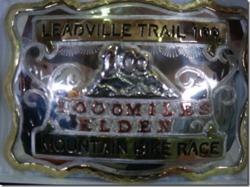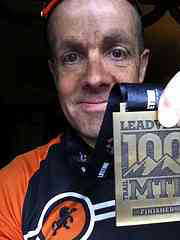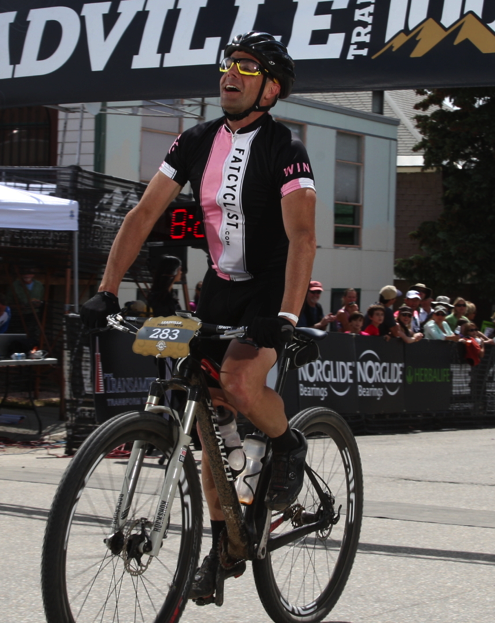01.27.2015 | 4:53 pm
A Note from Fatty: Last week I was interviewed by The Outspoken Cyclist about The Great Fatsby and anything else that came into my head. It was a fun conversation. Listen to it here. And be sure to subscribe to The Outspoken Cyclist’s podcast, while you’re at it. It’s awesome.
I’m a big fan of the short fiction compilations Ride and Ride 2. They’re interesting, diverse, sometimes exciting, sometimes thoughtful, sometimes funny, sometimes serious, and always about bicycles.
I’ve been asked to contribute a story for Ride 3. It’s a huge honor, and I’m really excited to be included.
The only problem is, fiction is not something I normally write. I’ve tried, and tried, and tried. And then I generally give up. The problem isn’t so much that I cannot write fiction. No, the problem is that I seem to be unable to begin fiction.
But today, I shall begin my story. No, I shall begin three different stories, because I figure I have roughly a 33% chance of actually having an interesting story beginning.
Please let me know which, if any, of these you’d like to see more of.
Oh, and also, as I write this sentence, I have no idea what any of these three story beginnings will actually be. None. At all.
Pressure’s on.
OK, for reals I’m going to start now. Right after I go get a snack and use the restroom.
And make a few calls.
Two hours later…
Evidently, this thing isn’t going to write itself. Let’s get started. Now.
Idea 1: “Kokopelli”
Daniel was one of those people who never stops talking. Which explains why, right this second, he is saying, out loud, “Oh no. Oh no oh no oh no.” Even though there’s nobody around him.
For miles.
Daniel, you see, thinks he’s probably going to die. And for once, Daniel is probably right.
Let’s back up a little for a moment. Not very far—this isn’t going to be some Tarantinesque flash-forward-flash-back story—but just a few minutes.
Daniel had been riding his mountain bike on The Kokopelli Trail, from Moab, Utah to Mack, Colorado. All 142 miles of it, in one push. By himself. In June. On a clear, windless day.
Which is to say that, about three minutes ago, the temperature outside was 102 degrees. (Fahrenheit.)
This was foolhardy, but not out of character.
But it wasn’t the heat that was likely to kill Daniel. At least not directly. In fact, right at this moment, Daniel isn’t really even thinking about the heat. Although he is sweating profusely.
He’s not even thinking about his broken collarbone, although I guarantee you that in about twenty minutes he’ll be giving it a considerable amount of attention.
Right now, Daniel is thinking about what caused him to endo and break his collarbone three minutes ago. Which was his friend Eric—very recently deceased—lying on the trail, facedown in what at first looked like a pretty good-sized anthill, but which in fact was an astonishing large pile of heroin.
Daniel doesn’t know what Eric is doing there. But he’s going to find out. Soon. Real soon.
As soon, in fact, as he stops wailing so I can step out from behind this rock and introduce myself.
And then we’re going to have a conversation.
Idea 2: Podium
I am 43 years old. I am a professional. I am a parent, a husband. I am a philanthropist, a sports commentator, and an orthodontist, licensed to practice in every state west of the Mississippi.
I am also the most successful professional cyclist that has ever lived.
And I am not talking about the past, either. I mean I’m the fastest cyclist who has ever lived, and I’m the fastest cyclist there is, right now.
I just won the Tour de France, for the twelfth time. Consecutively. Also, I just broke the hour record, which I already held. But this time, I broke it during the evening after the hardest climbing stage of the Tour de France (which I won).
If you and I were to meet at a party and, by way of getting to know me, you were to ask me to list three interesting facts about me, here is the list I would give:
- I have won three of the most recent Tours de France solo. Which is to say, I did not have a team. Which is to say, I raced by myself to give the other racers a chance.
- I do not have many friends.
- My name is Larry Armstrong. No relation.
I would not mention that I am not precisely human. I think I’d wait ’til we knew each other better before I told you that.
Idea 3: The Hunger
Nolan was being punished. He had done wrong, been bad. He had, in short, ruined everything.
And now he was going to have to ride this bike. For the rest of his life.
Which would be OK, he supposed, except that he hated riding his bike. No, not just his bike. Any bike. But this bike in particular, for certain.
But he was going to ride this bike anyway. He was going to figure out how to ride without his butt hurting. How to keep his knees from hitting his stomach. How to make that damned chain stop making that noise.
He was going to figure all this out because it was important. Because he wanted to stay alive.
Comments (71)
01.26.2015 | 11:02 am
A Note from Fatty: I’ve known David Lazar for more than a decade, starting with when I worked at programming magazines, and later with when I worked at Microsoft. He has an incredibly sharp and insightful mind and is one of those people who gets things done.
So when I started at Microsoft several years ago, I asked if he’d be my mentor there. Most of that mentoring happened during road rides—the best possible way to have a business meeting, if you ask me.
And even after I left Microsoft, David and I have stayed in touch. He contributes to my fundraisers; I contribute to his.
And a few days ago, he posted, in his blog, a really intriguing way to motivate yourself to stay on track with your objectives. I think it’s worth sharing.
Get Motivated: Pay Yourself
Tis’ the season for resolutions. Perhaps you’ve already been through a cycle of resolving to change, trying, failing and giving up.
I’ve been reading a ton about how people can achieve their goals, especially fitness-related goals. Real change is hard, witness the industries that are vying for your attention and money – TV shows, books, gyms, diets, new phones, fitness bands and apps.
I have a simple system that will help you succeed with your fitness goals, change your behavior for the long term, and the price is a one-time fee of whatever you want.
Before I tell you how to meet your goals, a little about me. I’m a fitness success story. I took up triathlon at age 40 after being relatively sedentary in my 20’s and 30’s. I’ve competed in at least one race or long-distance endurance event every year since. At age 50, I completed the half-Ironman in under 6 hours. I’ve been bike commuting year-round since 2008, my longest daily commute was 27 miles each way. And I still work out 5 or more hours a week, every week.
I’m also a student of human behavior, having been a marketer at Microsoft for 20 years. I’ve studied how customers respond to pricing, messaging, incentives, coupons, free offers, etc.
So I think I’m pretty well qualified to suggest a system for behavior change. My system is based on my experience and the latest research.
The key insight that experts have observed is that behavioral change is nothing more than establishing a new habit. In general, it takes people just a few weeks or months of successful performance to establish a habit. Once the habit is established, it’s very hard to change. Meaning, if you do this successfully, you may be able to sustain your goal for years to come.
The next insight is that financial rewards work. A cash prize of $10 per visit is enough to convince most people to go to the gym. Cash penalties of equal magnitude for non-performance increase the success rate.
Finally, people perform best when goals are clear and attainable, and they are externally observed. This last bit is important. Have you ever noticed when you’re running or biking and you approach or pass someone, your form improves and you speed up? That’s because we all like to be observed doing well.
Here’s my method:
- Set an attainable goal, for example: “I will ride my bike or go to the gym 3 times per week, 60 minutes each time, for 5 weeks. I will start this Saturday.”
- Write your goal and post it in a spot you see every morning. (Morning works well because you have time to make plans. If you have to go home to get your gear after work, chances are better you’ll fail that day.)
- Put 3 glass jars near the goal placard. Put your chosen sum of cash in the middle jar. I recommend $100 in this case, 5 weeks x $20 for each week. You decide exactly what amount works for you.
- The right-hand jar is for successful performance. Move $20 one jar to the right each Saturday if you made your goal of 3 gym visits. Congrats!
- The left-hand jar is for non-performance. Move $20 one jar to the left if you missed.
- You can cut yourself some slack. If it’s Saturday, and you only went twice, count today’s workout toward the previous week and start your next week on Sunday (tomorrow).
- When all the money is in the right-hand jar, congrats, you have attained your goal and probably established a healthy habit. Spend the money on something nice – an evening out with your S.O., new gear – something you wouldn’t normally buy. But do not take a break, keep going! If you feel any hesitation, cough up another $100.
- If all the money ends up in the left-hand jar, get ready to do something really distasteful, like giving the money to the NRA or some cause you personally detest. You will have selected this organization at the beginning so you will be working throughout to avoid it.
By the way, there are apps that use this methodology, I prefer the low-tech approach, but feel free to use one if you like.
Leave me a comment and tell me about your biggest fitness challenge and whether my idea works for you!
Comments (18)
01.21.2015 | 11:05 am
Hi there.
While I’d love for this blog to be the thing that pays the bills, it’s not. Which means that when the thing that does pay the bills—my day job—gets hectic, I need to deprioritize this blog for a bit.
Usually, I know when that’s going to happen, but not always. Like right now. I want to post and even have some fun things to post about, but right now I need to take care of my day job.
See you next week,

Comments (11)
01.19.2015 | 12:59 pm
Someday, I’m going to learn to not procrastinate so much. Like, maybe I’ll put it on my calendar for 2016. Or possibly 2017. But right now, I don’t have time to think about any of that, because in 24ish hours, I am going to be giving a speech at the Annual Seminar for the Institute of Transportation Engineers, Utah Chapter.
No, I am not making this up. Nor am I kidding.
However, I do have twenty minutes to fill. Right now, here’s what I’ve got figured out on how I’ll use that time:
- Introduce myself: 00:30
- Acknowledge applause: 01:30
- Speech (???): 04:00
- Watch YouTube videos: 07:00
- Announce that I’m letting everyone out early: 00:30
- Acknowledge applause: 04:00
As you can see, I’ve got a pretty good plan here, except I’m not all that sure what to say during that third bullet point — you know, the part where I have to give a speech.
Now, I don’t want to waste this opportunity to talk to transportation engineers, because it’s not every day you get a chance to complain about the roads to the people who actually figure out how roads ought to be built. Hence, there are several highly topical issues I am considering talking about — ideas for the transportation engineers to get to work on.
- Fully-enclosed cyclist lane to block the wind, to isolate us from exhaust, and also to keep us from getting killed
- Singletrack alongside all major thoroughfares.
- Cars and roads include a system to administer electric shock to drivers as they get close to cyclists. Starts as a warning, becomes increasingly painful as drivers get closer
- My idea for a super cool new road sweeper that moves debris, scree, salt, rocks, and broken glass not onto the shoulder but actually all the way off the road
- My petition to make it required that people in cars and on the street also have to wear stupid hats, not for protection, but so that we’ll all have equally bad hair upon completing our respective commutes
Because they’re all top-notch ideas, I’m expecting them to be met with universal approval—and probably lots of funding—immediately.
That said, I believe it’s possible that there are more good ideas out there. Ideas that transportation engineers need to hear.
Post them here. I will pick the good ones (both the serious good ones and the ridiculous good ones) and include them in my speech.
Which I plan to record and post here, because you will not want to miss it.
Comments (34)
01.16.2015 | 10:41 am
Yesterday afternoon I got a highly-coveted email. It looks like this:

Yep, I’m in for my eighteenth Leadville. Nineteenth, if you count 2009, the year I crashed out of the race. By the way, you should not count that one. Nor should you count 2015, until late in the afternoon this August 15th, when—provided everything goes well that day—I’ll have actually finished my eighteenth Leadville 100.
In other words, while it’s really tempting for me to talk about this as my nineteenth Leadville Trail 100, the reality is I’ve finished it only seventeen times.
Still, that’s more finishes than most people. And it’s quite a few stories.
For those of you who want to start getting worked up about the Leadville 100 or are interested in what eighteen years of stories about the same race (yes, eighteen, because I definitely have a story for the year I didn’t complete), here’s a handy list: all of my Leadville 100 write-ups, linked from one place.
I hope you didn’t have any other plans for the weekend.
1997, 10:35:54 – Finish 1: My first racing of the Leadville 100 is worth reading primarily because it’s such a normal first-time story. If you’re planning on racing the Leadville 100 and are wondering if it’s weird that you’re already thinking about it all the time, read this.
Nowadays I read this installment both with fondness and with astonishment at how little I knew about racing.
1998, 11:27:05 – Finish 2: I like this story more because it’s a telling of how two of my best friends—Dug and Bob—and I did the race, from each of our points of view. It has a great ending.
1999, 9:13:09 – Finish 3: For a long time, my third attempt was my fastest. Just thirteen minutes shy of that big buckle. Far from it being an accomplishment of which I was proud, though, I remember getting away from the finish line as fast as I could, making my way to my car, and just sobbing for about five minutes. I had come so close to hitting my objective, which hurt a lot more than if I’d have missed it by an hour, somehow.
Unfortunately, I either did not write this story up, or can’t find it. Regardless, it’s gone now.
2000, 9:30:29 – Finish 4: I came to Leadville this year with the intention of getting that sub-9-hour finish, and then it rained. Hard. This is the year everyone talks about when they describe how difficult Leadville can be. I wrote my story for Active.com, so you’ll find it here.
As a bonus, this was the year The Hammer raced Leadville 100 for the first time. It just about killed her, and her story is definitely worth reading.
2001, 9:17:02 – Finish 5: This year starts establishing my pattern of not quite hitting my goal of finishing in under nine hours. This is back before I had a blog where I wrote everything that happens to me, and thus…I have no individual memory of this race.
2002, 10:20:37 – Finish 6: I learned the “non-contributing weight” axiom of the Leadville 100: Every non-contributing pound you carry costs you five minutes. I was riding a full suspension bike, had gained some weight, and had not trained like I should. I am going to cut my past self some slack, however, because I was the father of infant twins.
Oh, also, I took a 20 minute nap at the final aid station. Refreshing! (And no, I don’t have a story writeup for this year.)
2003, 9:20:04 – Finish 7: I learned that one can drink only so much Gatorade. About 3/4 of the way through the race I got nauseous and started barfing anytime I tried to eat or drink anything. I blame the Gatorade, probably without reason. If I hadn’t gotten sick toward the end of the race, this might’ve been the year I got that sub-9 I’d wanted so badly. No write-up on this year.
2004, 10:56:33 – Finish 8: I learned that just finishing can be a victory. This was while my life was pretty much completely insane and I had not trained at all. So I went to Leadville just to have fun and see my friends. And you know what? It was a great ride/race. I talked with a lot of people who — like me — just wanted to finish. The support and cameraderie at the back of the pack is much stronger than at the front. These racers are the heart of mountain biking.
2005, 9:41:20 – Finish 9: I had just begun doing some freelancing for Cyclingnews.com, so asked them if they’d be interested in a story where I interview folks as I rode alongside them on the course. This turned out to be a great idea; I had a terrific race. My story is here, and you can find the two-part story I wrote for CyclingNews here: Part 1, and Part 2.

2006, 10:06:45 – Finish 10: This was my tenth year racing the Leadville 100. I had a grand plan to finish it in under nine hours. Wouldn’t that be dramatic, to hit my goal the same year I got my coveted 1000-mile buckle?
Yes, it would have been dramatic. Unfortunately, I finished this race in over ten hours.
This is a telling of how you can delude yourself into thinking you’re really fast…only to find out the reality at game time.
2007, 9:14:13 – Finish 11: I call this story, “Sort of Close, but No Cigar.” By the time I raced in 2007 I was doing almost everything right. But not quite everything. This year also marks the year I started getting really verbose with my race stories and writing them as multi-parters. So:
- Part 1: Close, But No Cigar
- Part 2: Fatty Has Fun, Works the Crowd, and Gets Cocky
- Part 3: Rise and Fall
- Part 4: I Can Do It! I Can Do It!…No, I Can’t.
- Part 5: Susan’s story of what it’s like to crew for me during a break from chemo.
2008, 10:06:42 (singlespeed) – Finish 12: 2008 was the first year I tried racing on a singlespeed. Since I knew I wasn’t going to finish in under nine hours on a single, I was released from the stress of a goal that seemed—at the time—unattainable, and was able to just enjoy the race.
This was also the year I nearly got crashed out of the race ten seconds into it.
- Part 1: The First 30 Seconds
- Part 2: Upon Further Reflection
- Part 2a: Equal Time for Louis
- Part 3: 7 Reasons I Loved Leadville This Year
- Part 4: The Actual Race Report
2009, DNF (singlespeed): Susan had died just before this race. My head wasn’t in the race. I was riding angry and stupid. The fast downhill pavement turned; I didn’t. Honestly, I do not understand how I managed to not be seriously injured.
2010, 9:17:27 (singlespeed) - Finish 13: With a 9:17 on a singlespeed, this was the year where it occurred to me that the sub-nine-hour finish might not be an impossible dream for me after all. This is the year I appeared (starred, really) in Race Across The Sky, by the way. I was brilliant, by all accounts.
- Part 1: Racing from the starting line to the bottom of Columbine
- Part 2: The joys of eating cantaloupe at 12,600 feet. And the horror of even consdering a hotdog at that selfsame altitude.
2011, 8:18:19 – Finish 14: To date, this is my high-water mark for racing the Leadville 100. This is the year I kind of figured everything out: the training, the right kind of bike, how much (and whe n) to eat, how long of breaks to take…everything. I finished well under my goal of nine hours, and Specialized rewarded me by letting me keep what had been, up to that point, a long-term test bike. Wow.
n) to eat, how long of breaks to take…everything. I finished well under my goal of nine hours, and Specialized rewarded me by letting me keep what had been, up to that point, a long-term test bike. Wow.
- Part 1: For the first time ever, I get to write a list of things I did right.
- Part 2: As it turns out, geared bikes are faster than singlespeeds. Shocker!
- Part 3: If you’re fast enough, you get to spend the day riding with people who are genuinely fast, but having a bad day. And they love telling you about it.
2012, 8:49:47 (singlespeed, first place) – Finish 15: If you train really hard and all the right people fail to show up, it’s possible to win the men’s singlespeed division at Leadville with a time of 8:49. The fact is, though, I’m really proud of this finish time, because following this race (literally the next day) I was racing The Breck Epic for six days.
- Part 1: Packing nightmare.
- Part 2: You want rules? I’ll give you rules.
- Part 3: Headwind from Hell.
- Part 4: Discombobulation
- Part 5: The Tragedy of the Empty Podium (ridiculous free verse)
2013, 8:23:54 (singlespeed) – Finish 16: I took a different tack in this report. Instead of talking about my race (my fastest singlespeed finish, but not fast enough to get me on the podium), I talked about why I love this race.
- Part 1: Preamble
- Part 2: The People
- Part 3: Some things are life-changing. Other things aren’t but are still pretty awesome.

2014, 8:39:38 (singlespeed) - Finish 17: My race report from last year is worth reading, but the real star of 2014 is The Hammer and her adventure racing with MTB Legend Rebecca Rusch. Here are the links to both stories.
My Story
- Part 1: Things are great until they’re not
- Part 2: Starts with pain, ends with beauty
- Part 3: I am the fast guy, I am the slow guy
- Part 4: I wait for no man, nor woman, neither
- Part 5: Cornball at 10,000 feet
- Part 6: Finish lines
The Hammer’s Story: Racing with The Queen of Pain
2015: My Fastest Year Ever
I’m just going to be lazy here and post the links.
PS: So this is a weird idea, but would it be interesting to have these stories available as a podcast series? Something to listen to as you’re driving to work or putting time in on the rollers?
Comments (26)
« Previous Entries Next Page »




 n) to eat, how long of breaks to take…everything. I finished well under my goal of nine hours, and Specialized rewarded me by letting me keep what had been, up to that point, a long-term test bike. Wow.
n) to eat, how long of breaks to take…everything. I finished well under my goal of nine hours, and Specialized rewarded me by letting me keep what had been, up to that point, a long-term test bike. Wow.